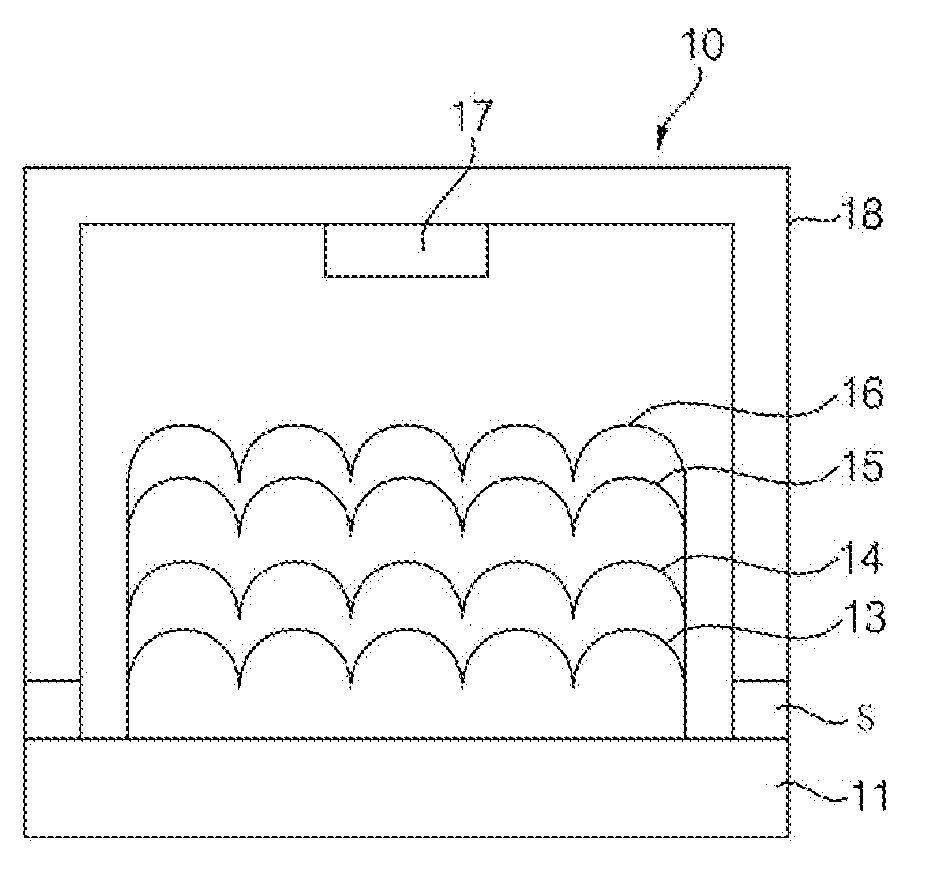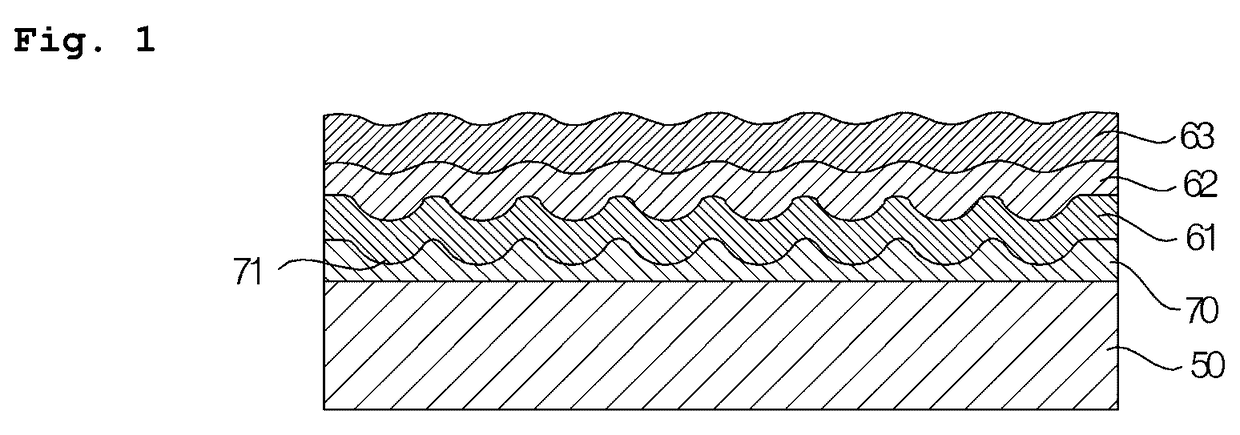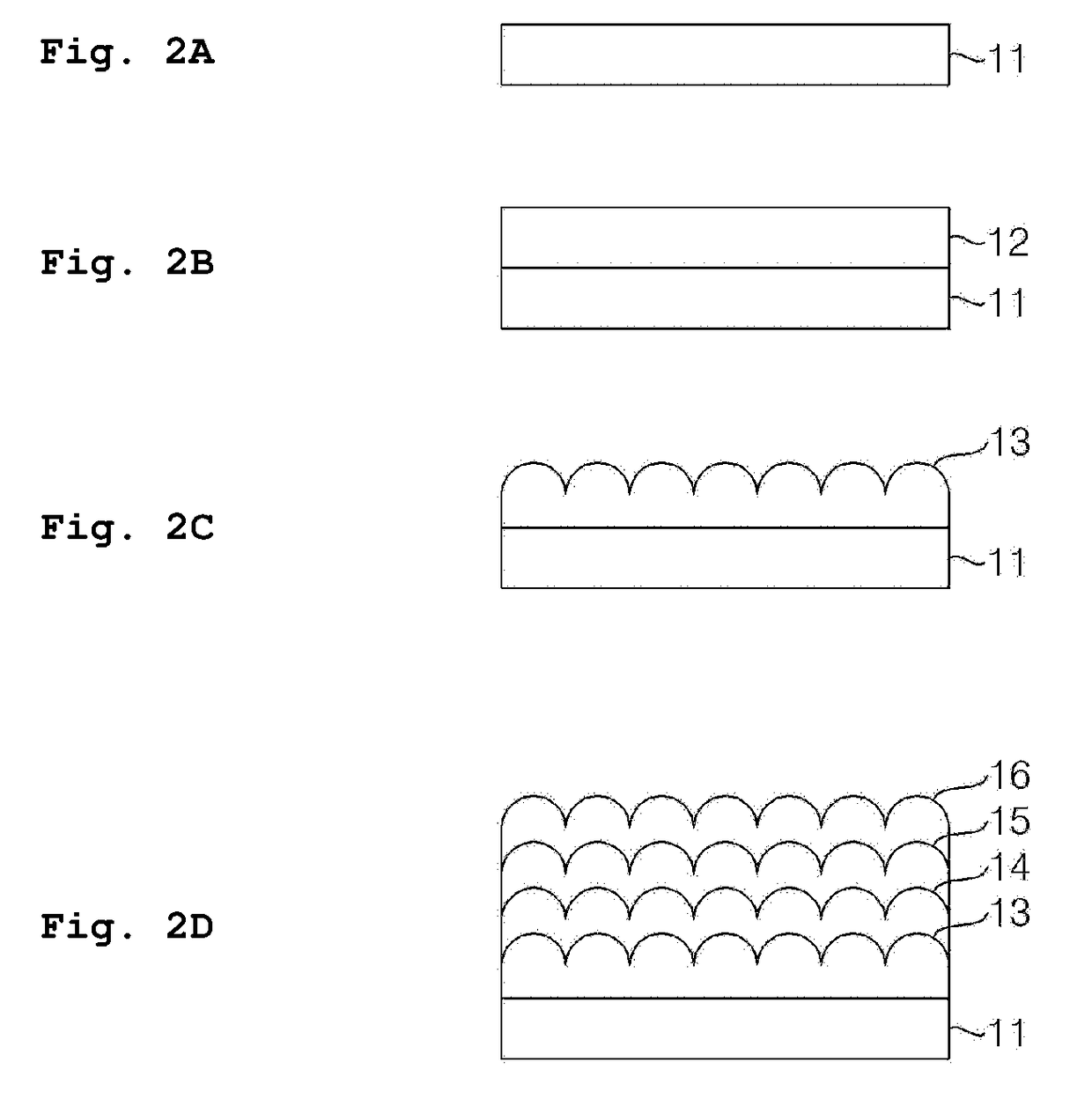Method for manufacturing substrate, substrate, method for manufacturing organic electroluminescence device, and organic electroluminescence device
a technology of organic electroluminescence and manufacturing method, which is applied in the direction of semiconductor devices, instruments, electrical devices, etc., can solve the problems of reducing the light extraction efficiency of electrodes and substrates, emitted 20% of the light generated from organic light-emitting layers, and deteriorating the efficiency of light extraction
- Summary
- Abstract
- Description
- Claims
- Application Information
AI Technical Summary
Benefits of technology
Problems solved by technology
Method used
Image
Examples
modified example 2
[0111]In Embodiment 2, the corrugated layer 24 was formed by forming the metal layer 23 over the entire polymer layer 22 formed on the substrate 21 and applying the ion bombardment stress and the heating stress thereto. However, the patterning process of patterning the polymer layer 22 formed on the substrate 21 may be further performed as in Modified Example 1 (FIG. 6C), and then the metal layer 23 may be formed so that a size thereof is matched with the size of the polymer layer 22 that is patterned to have a predetermined shape (FIG. 6D). Subsequent processes are the same as those of FIGS. 4D and 4E described in Embodiment 2.
[0112]Further, the reason to pattern the polymer layer 22 at a predetermined size is the same as described in Modified Example 1.
embodiment 3
[0113]Next, preferred Embodiment 3 of the present invention will be described with reference to FIG. 12. FIG. 12 is a cross-sectional view illustrating an organic EL device according to preferred Embodiment 3 of the present invention.
[0114]Embodiment 3 is different from Embodiments 1 and 2, and Modified Examples 1 and 2 in that in the organic EL devices of Embodiments 1 and 2, and Modified Examples 1 and 2, the first electrode, the organic light-emitting layer, the second electrode, and the like are formed on the corrugated layer, but in Embodiment 3, the first electrode, the organic light-emitting layer, the second electrode, and the like are formed on a surface of the substrate opposite to a surface on which the corrugated layer is formed.
[0115]As illustrated in FIG. 12, in an organic EL device 30 of Embodiment 3, a first electrode 34, an organic light-emitting layer 35, and a second electrode 36 are sequentially formed on a surface of the substrate 31 opposite to the surface on w...
PUM
| Property | Measurement | Unit |
|---|---|---|
| thickness | aaaaa | aaaaa |
| transmittance | aaaaa | aaaaa |
| refractive index | aaaaa | aaaaa |
Abstract
Description
Claims
Application Information
 Login to View More
Login to View More - R&D
- Intellectual Property
- Life Sciences
- Materials
- Tech Scout
- Unparalleled Data Quality
- Higher Quality Content
- 60% Fewer Hallucinations
Browse by: Latest US Patents, China's latest patents, Technical Efficacy Thesaurus, Application Domain, Technology Topic, Popular Technical Reports.
© 2025 PatSnap. All rights reserved.Legal|Privacy policy|Modern Slavery Act Transparency Statement|Sitemap|About US| Contact US: help@patsnap.com



